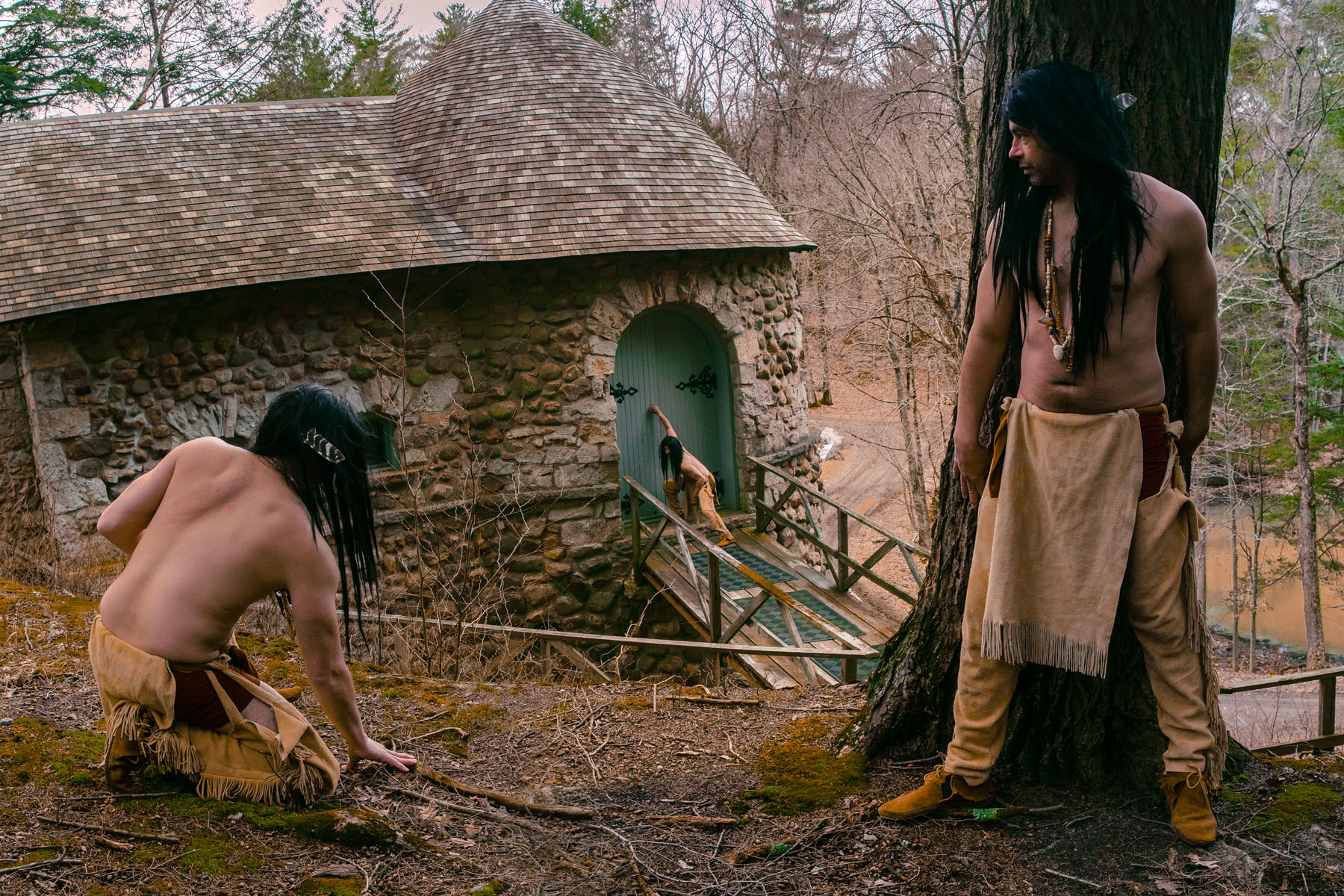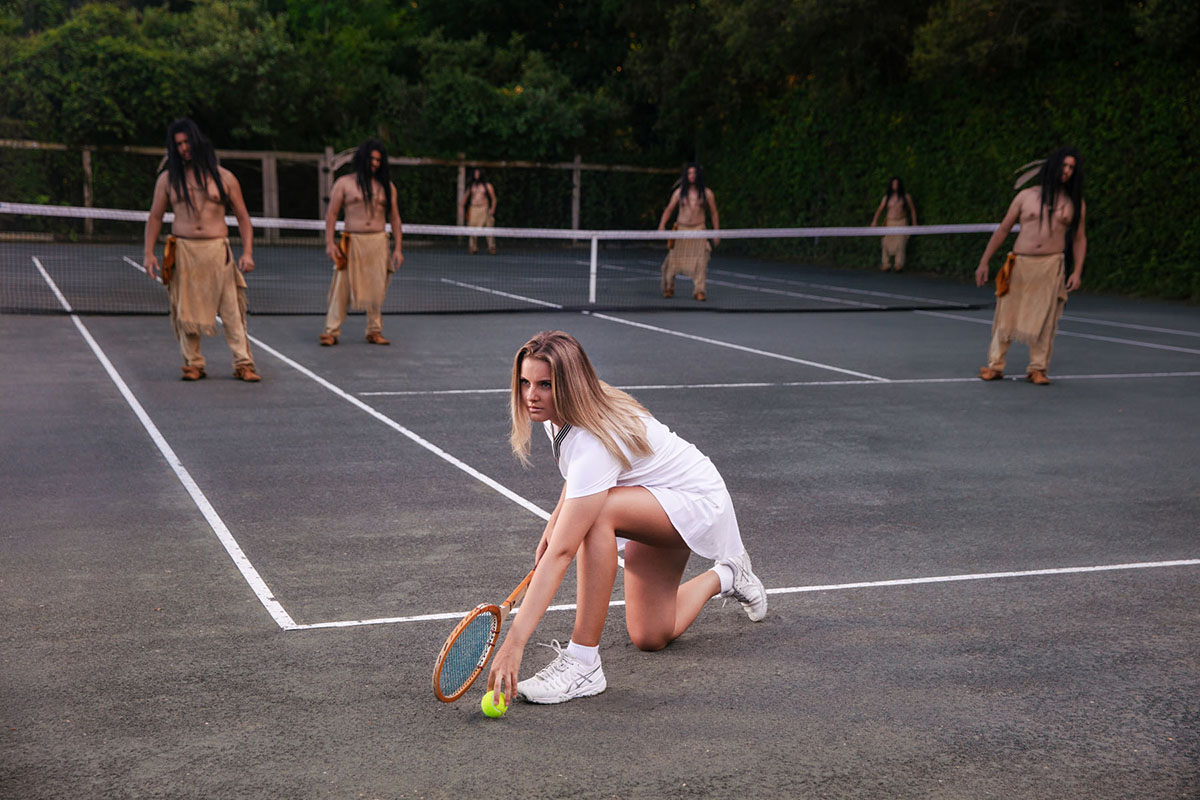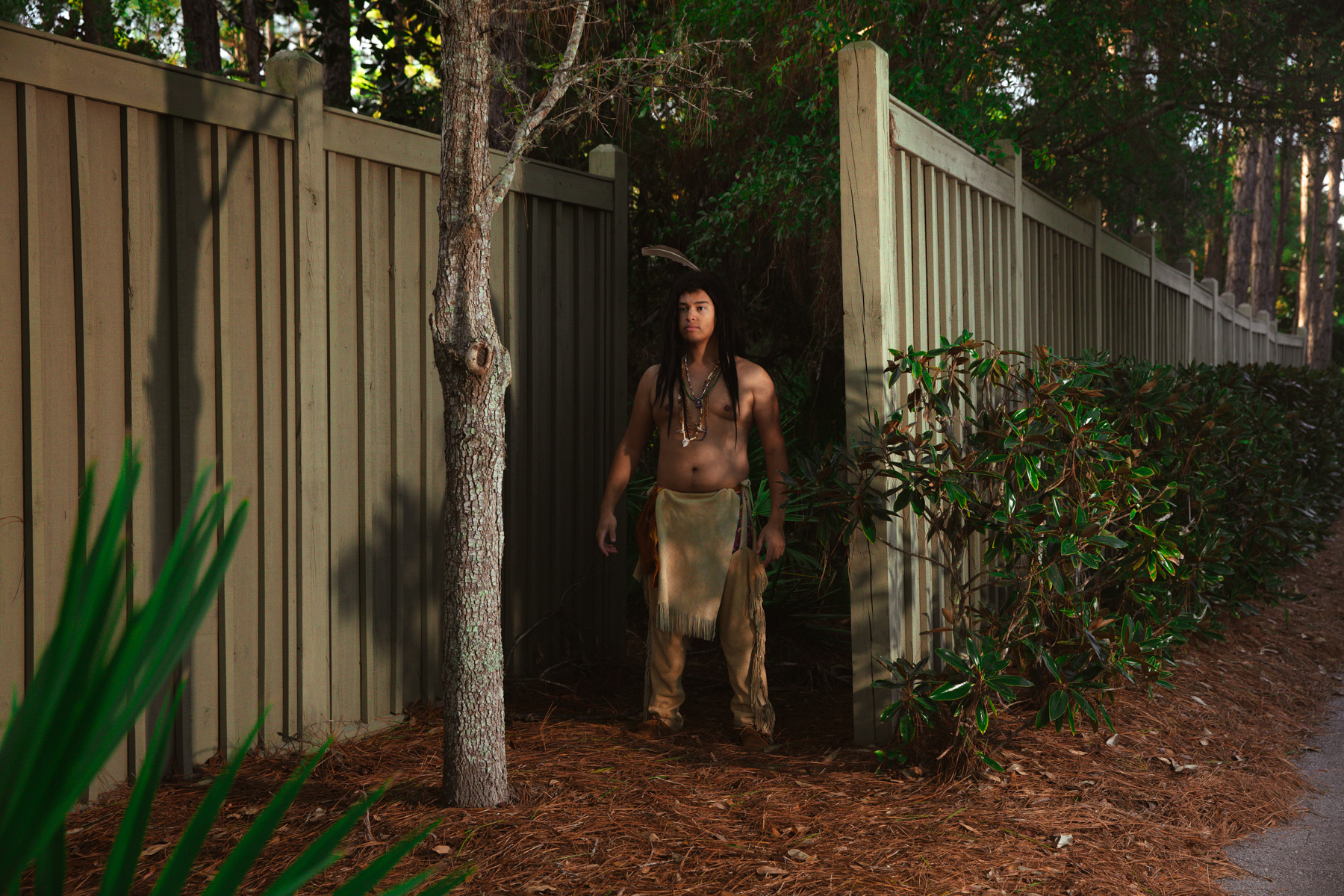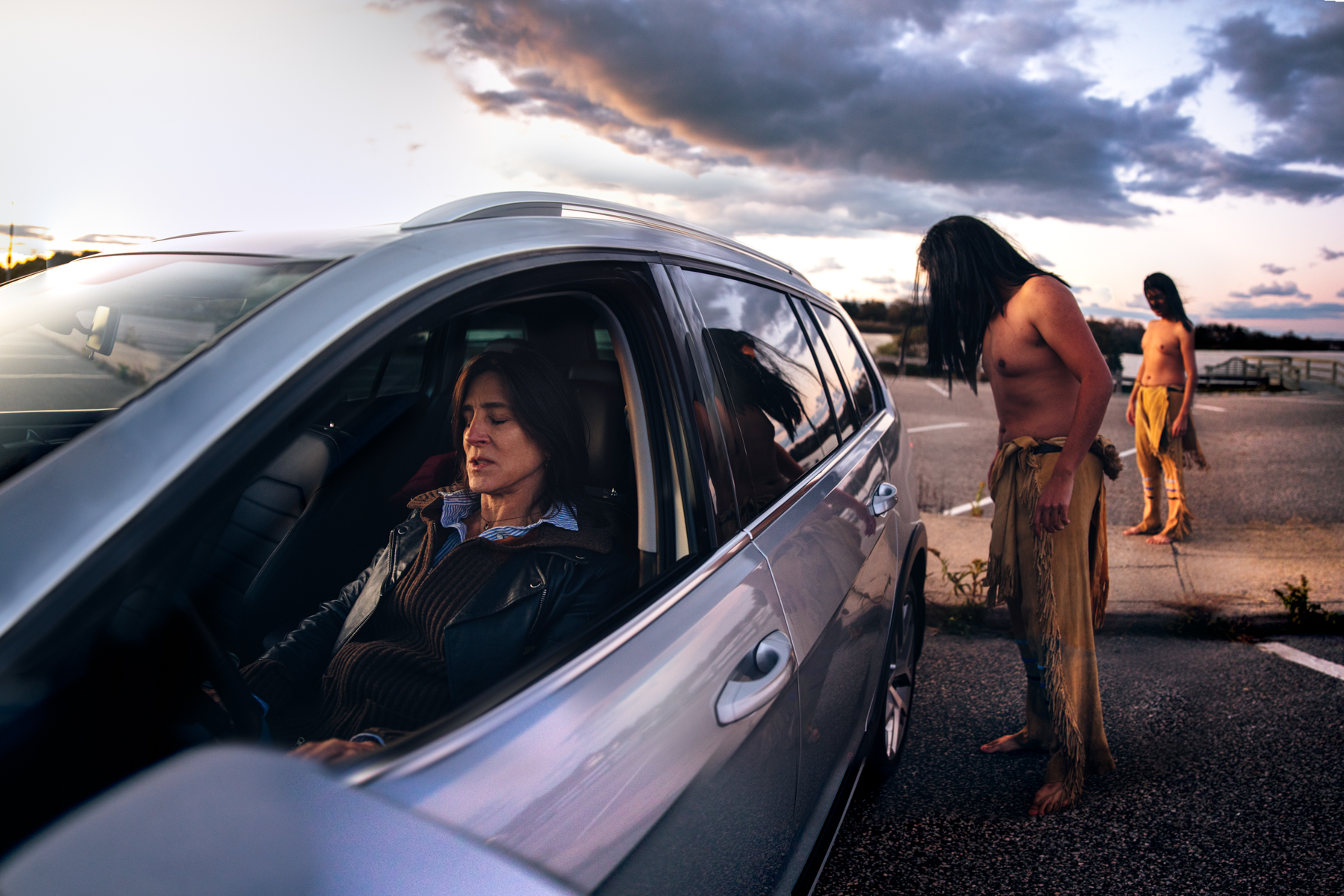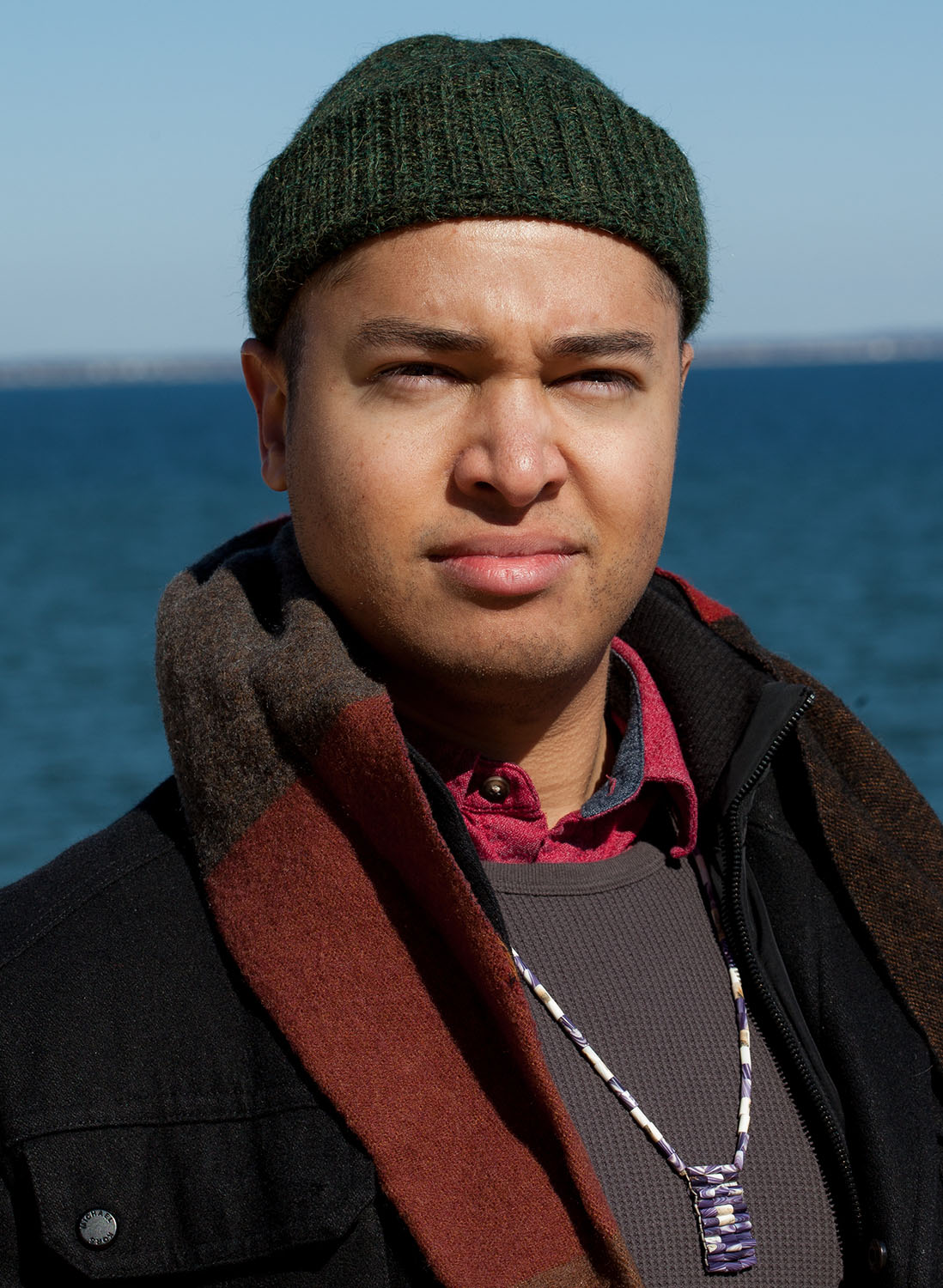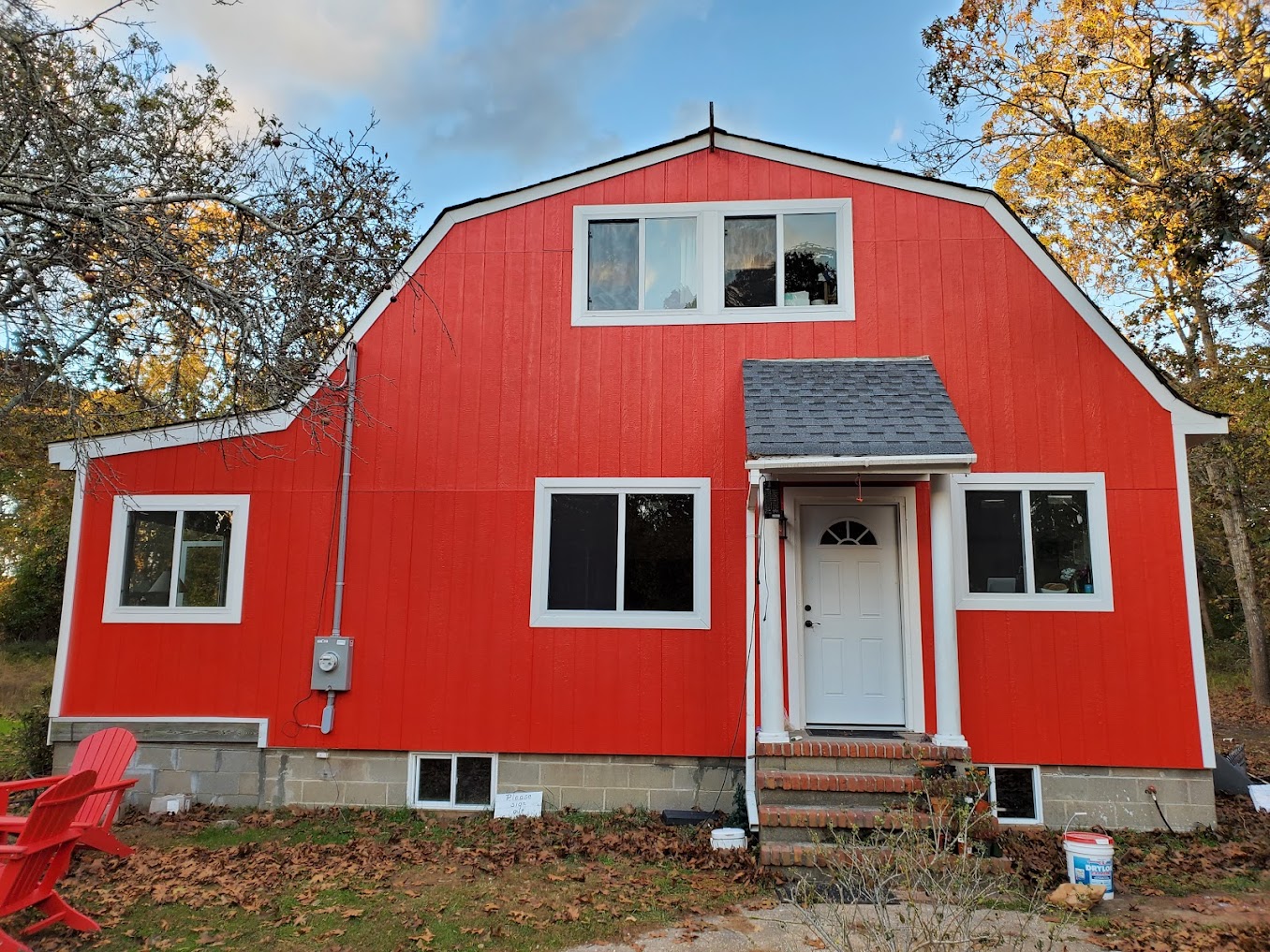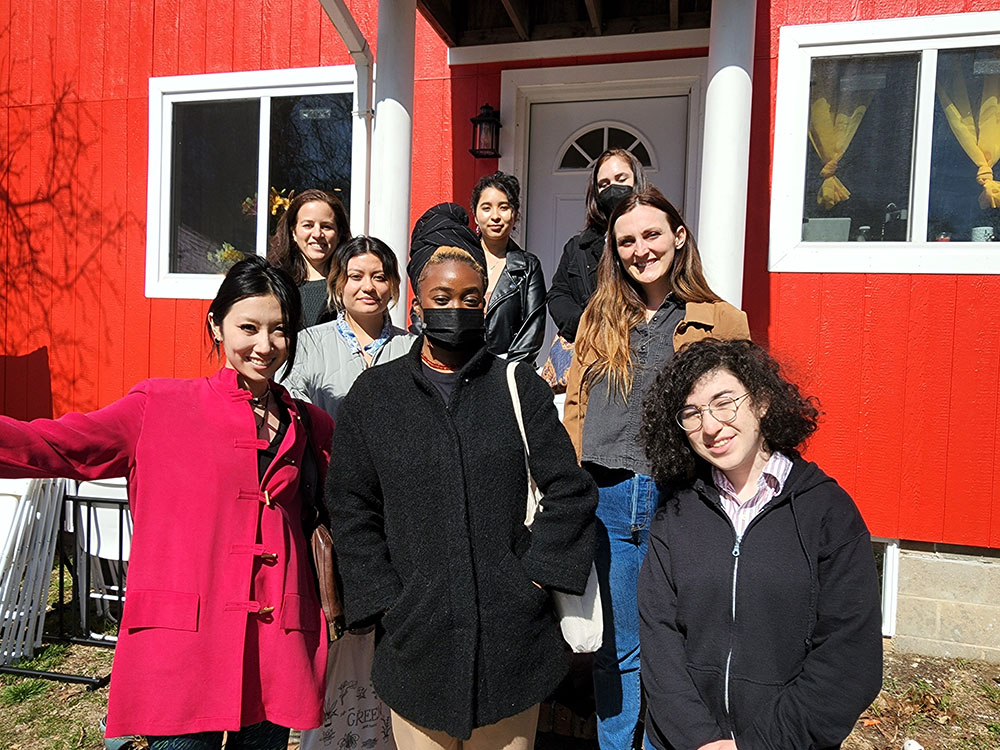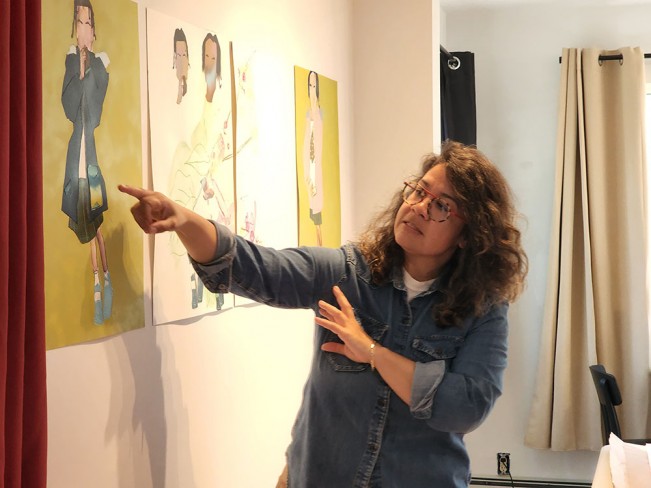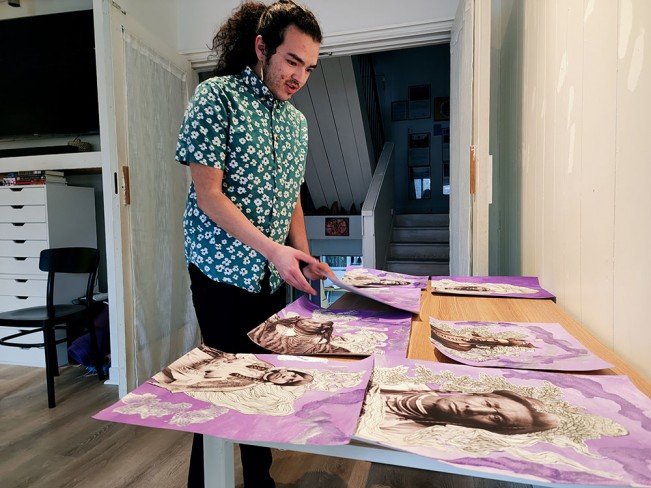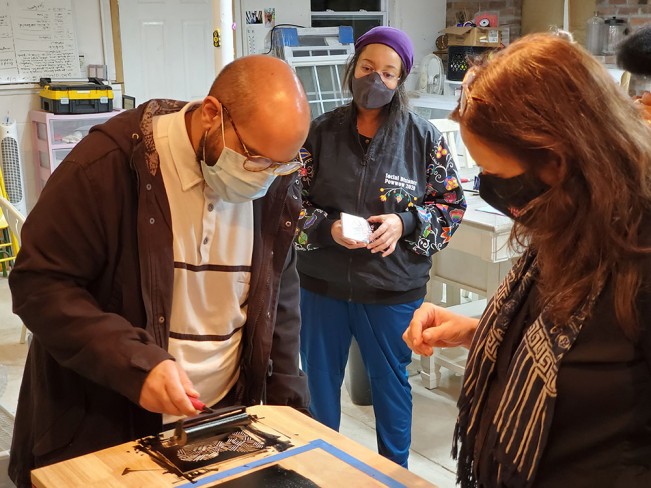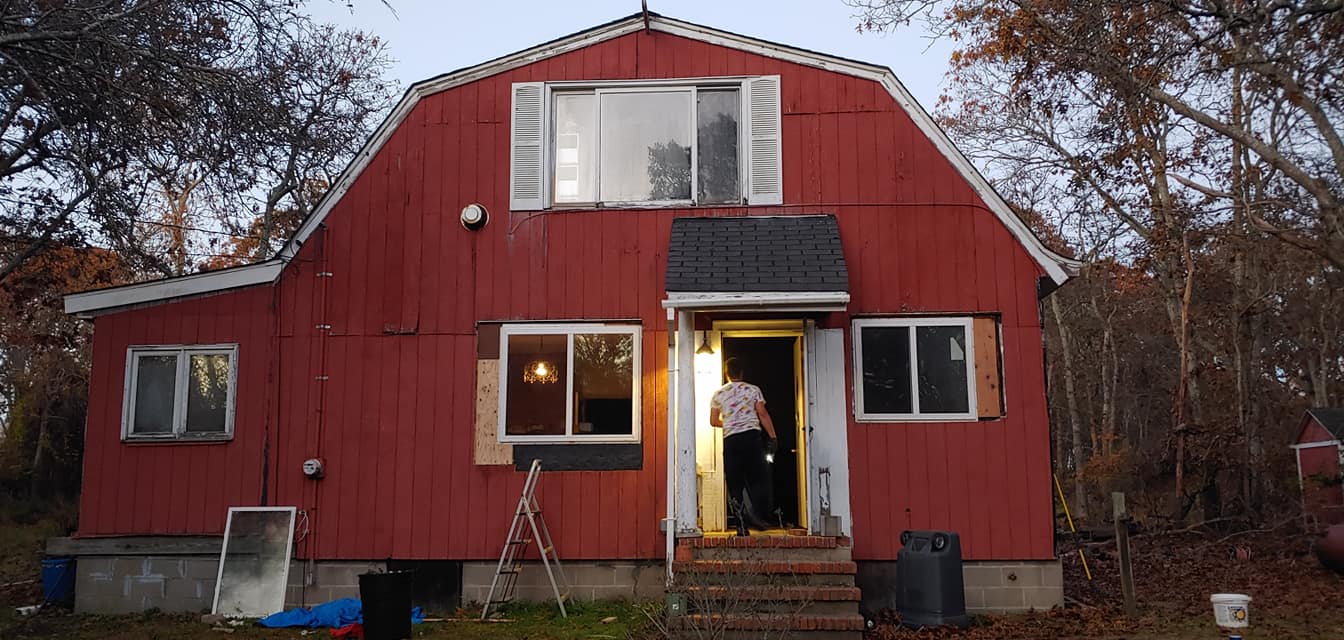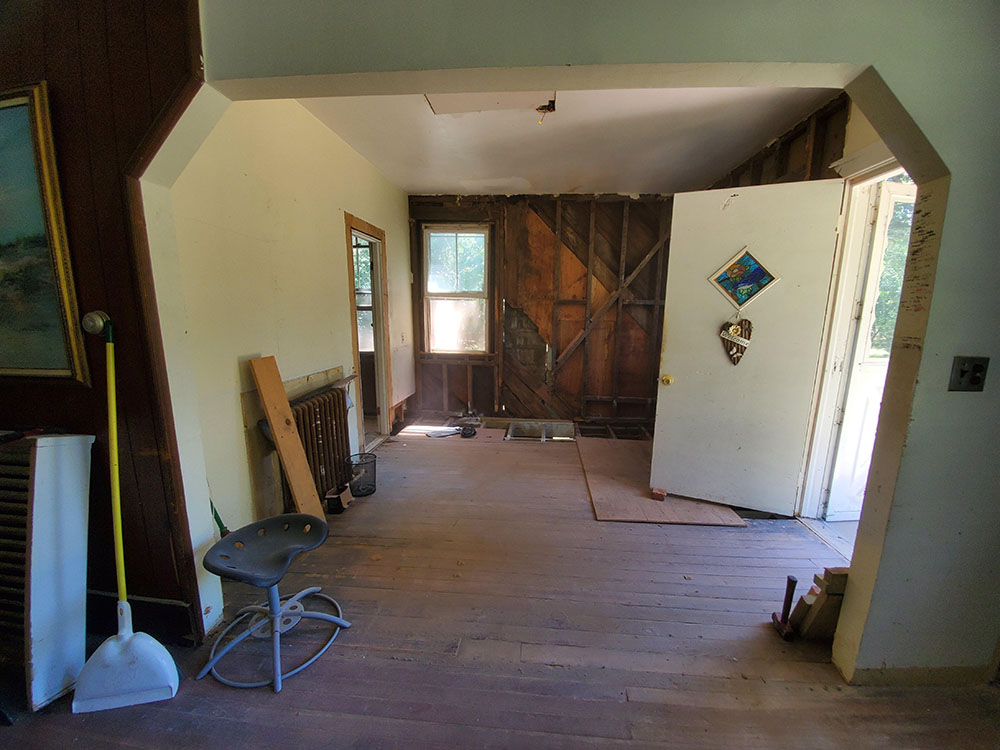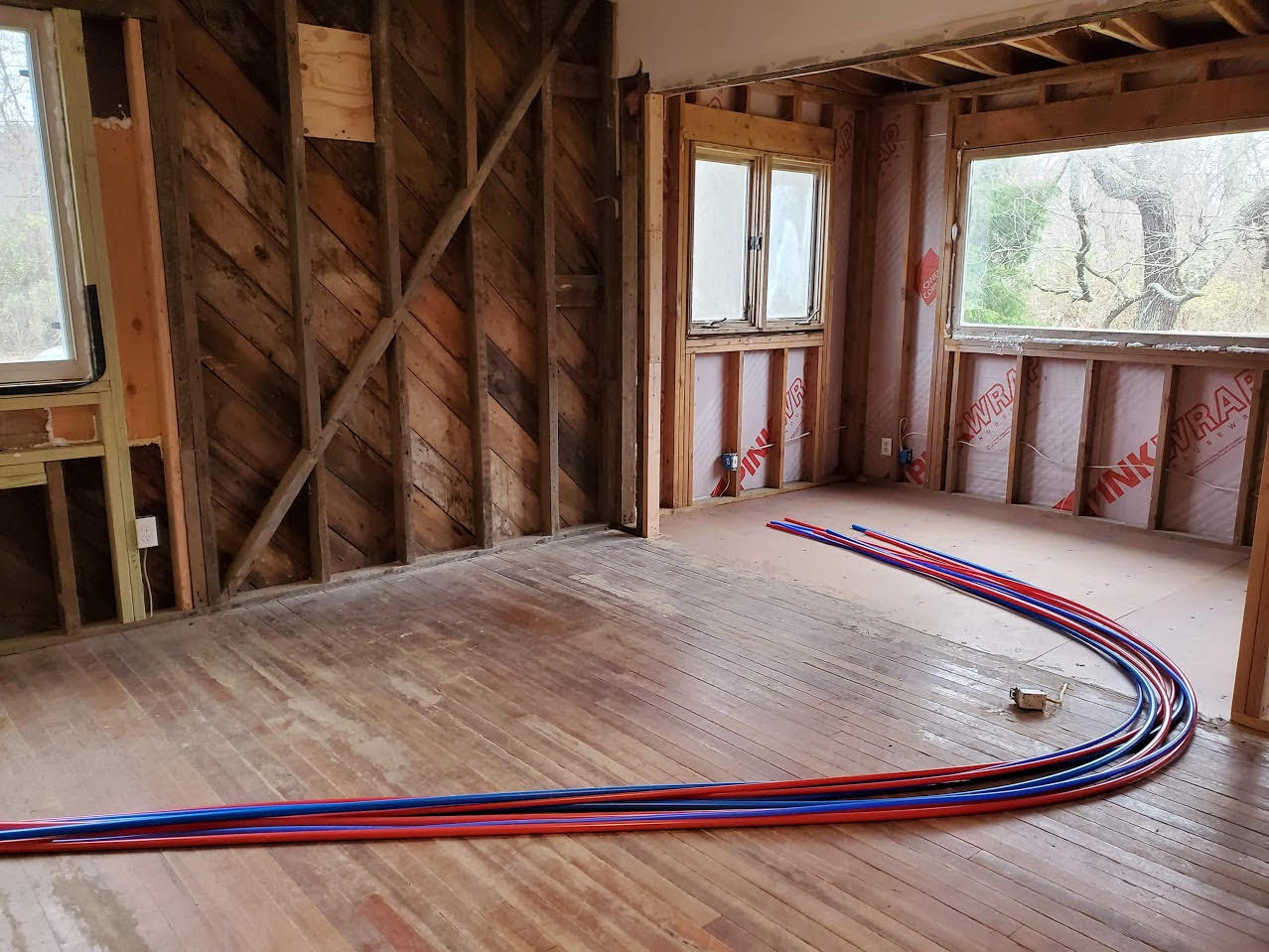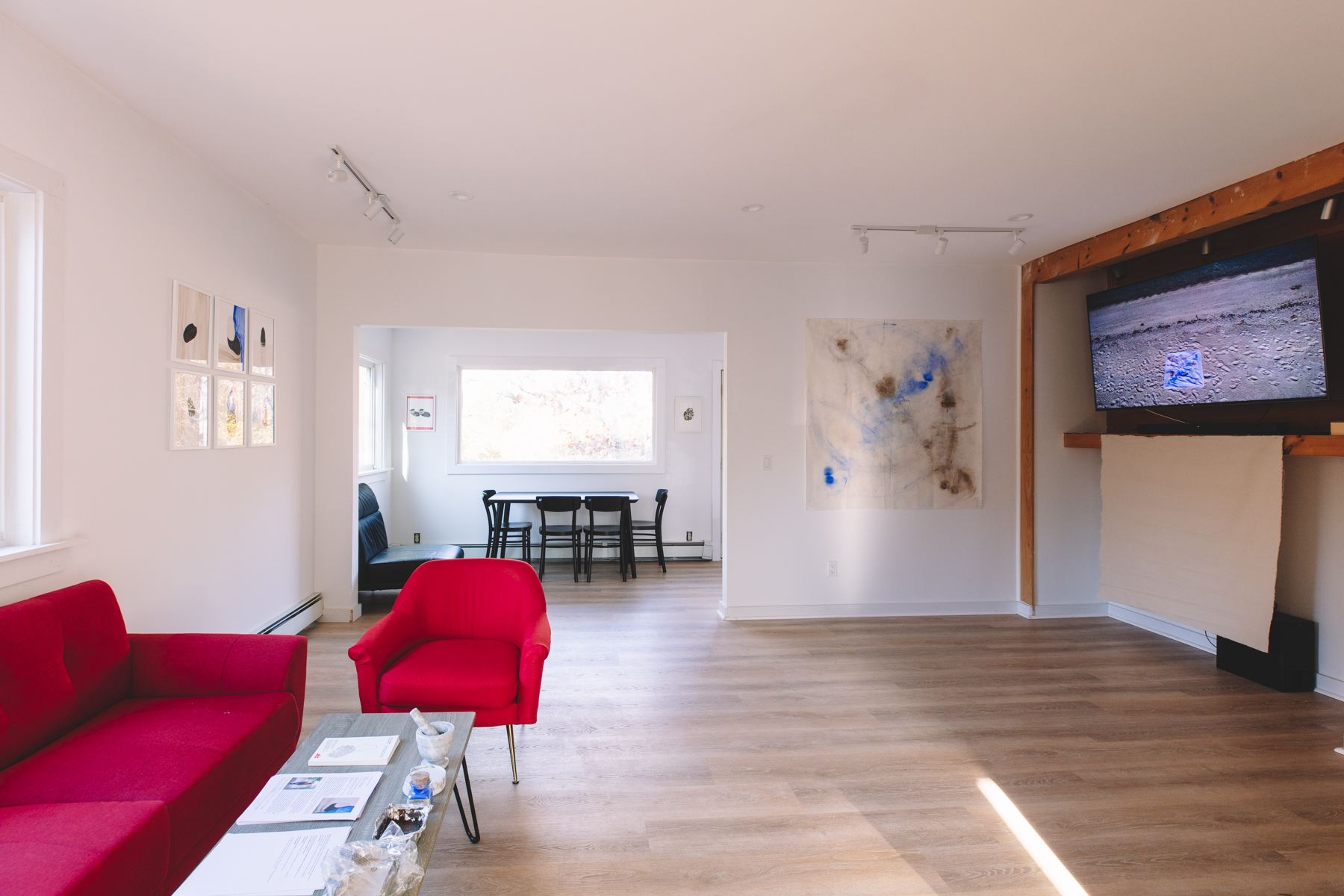Jeremy Dennis: Creating Space
We first met Indigenous lens-based artist, activist and art center founder Jeremy Dennis in 2020, as he was working on his ongoing project On This Site and had been exhibiting his series Nothing Happened Here nationally. Today, in observance of Indigenous People’s Day, we wanted to share some of his new project, Rise, and interview Jeremy to learn more about his latest effort, Ma’s House & BIPOC Art Studio and the amazing progress that has been made since 2020.
While creating his own work, he embarked on a project called Ma’s House & BIPOC Art Studio. Since June 2020, Shinnecock Nation tribal member and Indigenous visual artist and photographer Dennis has endeavored to restore the Silva family home he grew up in to make this space “ Ma’s House & BIPOC Art Studio” (hereinafter referred to as “Ma’s House”) a communal and safe space for Black, Indigenous, and People of Color (BIPOC) artists to create work, participate in artist residencies and be offered a place to exhibit their contemporary work on the Shinnecock Indian Reservation.
The idea for the Ma’s House project came to Dennis after many of his anticipated residencies and exhibitions were cut short or canceled due to the COVID-19 pandemic. Lacking space to create work, Dennis reflected on his circumstances and that of other BIPOC artists in minority communities with compounded health disparities and economic injustices during this crisis who also lost opportunities and felt blows to their livelihoods and artistic practices. Inspired by the rise of social justice activism against police brutality, bigotry, and systemic racism and considering the unprecedented challenges artists who identify as BIPOC face to follow their passions and have their work supported, Dennis hopes that Ma’s House will be a space for creativity, healing, imagining, and liberation.
‘Rise’ reflects upon the historical legacy of the Pequot War, King Philip’s War, and the fear of indigenous people in New England and later throughout the United States. Fear, in this instance, comes from the acknowledgment of our continued presence, not as an extinct people, but as sovereign nations who have witnessed and survived four hundred years of colonization.
Playing with recognizable zombie film and TV show iconography, ‘Rise’ highlights parallels between the apocalyptic rising undead and popular misinformation of indigenous people as a vanished race.
Jeremy Dennis (b. 1990) is a contemporary fine art photographer and a tribal member of the Shinnecock Indian Nation in Southampton, NY. In his work, he explores indigenous identity, culture, and assimilation.
Dennis was one of 10 recipients of a 2016 Dreamstarter Grant from the national non-profit organization Running Strong for American Indian Youth. He was awarded $10,000 to pursue his project, On This Site, which uses photography and an interactive online map to showcase culturally significant Native American sites on Long Island, a topic of special meaning for Dennis, who was raised on the Shinnecock Nation Reservation. He also created a book and exhibition from this project. Most recently, Dennis received the Creative Bursar Award from Getty Images in 2018 to continue his series Stories.
In 2013, Dennis began working on the series, Stories—Indigenous Oral Stories, Dreams and Myths. Inspired by North American indigenous stories, the artist staged supernatural images that transform these myths and legends to depictions of an actual experience in a photograph.
Residencies: Yaddo (2019), Byrdcliffe Artist Colony (2017), North Mountain Residency, Shanghai, WV (2018), MDOC Storytellers’ Institute, Saratoga Springs, NY (2018). Eyes on Main Street Residency & Festival, Wilson, NC (2018), Watermill Center, Watermill, NY (2017) and the Vermont Studio Center hosted by the Harpo Foundation (2016).
He has been part of several group and solo exhibitions, including Stories—Dreams, Myths, and Experiences, for The Parrish Art Museum’s Road Show (2018), Stories, From Where We Came, The Department of Art Gallery, Stony Brook University (2018); Trees Also Speak, Amelie A. Wallace Gallery, SUNY College at Old Westbury, NY (2018); Nothing Happened Here, Flecker Gallery at Suffolk County Community College, Selden, NY (2018); On This Site: Indigenous People of Suffolk County, Suffolk County Historical Society, Riverhead, NY (2017); Pauppukkeewis, Zoller Gallery, State College, PA (2016); and Dreams, Tabler Gallery, Stony Brook, NY (2012).
Follow Jeremy Dennis on Instagram: @jeremynative
Jeremy, first tell us a little bit about your background as a lens-based artist.
I am an artist and photographer from the Shinnecock Nation in Southampton, NY. I studied at Stony Brook University for my BA and received an MFA at Penn State University. I have had incredible mentors along the way including the accomplished photographer’s Herbert Randall, Lonnie Graham, and others. In the work I am known for as an artist, I explore themes of Indigenous representation, ancestral culture and traditions, storytelling, and modern-day issues. I have experienced an incredible excitement about Indigenous people and culture but at the same time an equal amount of ignorance towards our present-day continued presence and our history of resilience and contributions. In my work, I try to highlight different moments of intrigue and education and present that in a photographic medium if possible.
You аre not just an artist, you аre also the founder of an amazing art space, let’s talk about your on-going project, Ma’s House, how it started, and why this project is so important to you?
Ma’s House is a communal art space located on the Shinnecock Indian Nation territory in Southampton, NY. Our modest space features a community library, residency program, BIPOC artist residency, shared studio space, and space for free workshops and more. The space itself was built in the 1960s by my grandparents Peter Silva Sr. and Loretta Silva (Ma) for their six children. Over the years many relatives lived in the house including my immediate family and me. Unfortunately, it fell into disrepair over the years due to environmental and water damage compounded by the inability to raise funds to repair the space. On tribal territories, you are unable to get a loan for housing projects for housing. In June 2020, during the pandemic, our family made the choice to try to restore Ma’s House and started a GoFundMe, which surprisingly raised over 40,000 dollars. We decided to commit the space to public programming and serving artists of color whenever possible due to this overwhelming support that made the renovation possible. Since then, we received our 501c3 nonprofit status to continue the mission of serving artists of color through our residency and another programming.
What have been some of your biggest challenges in getting this project where it is today and what are some of the challenges regarding continuing your work at Ma’s House?
The Ma’s House space can only support one resident artist at a time due to limited space – it would be incredible to offer space for more resident artists and build additional structures to offer more to artists who visit but the cost of these types of projects has been out of our capabilities. We are hoping to work with builders or manufacturers who can make this type of project possible on our modest budget despite living in the Hamptons.
Beyond practical matters of building out the space, and the historical significance of the house itself, how does the studio serve as a catalyst for BIPOC artists and as a cultural center for the community?
Our residency program and weekly workshops are focused on supporting BIPOC artists by providing valuable time and space to either create new work or potentially take a break and relax during their time at Ma’s House. There is no fee to apply or stay at Ma’s House, and we hope to work with different funders to offer stipends to offset grocery, travel, and material costs. As an artist of color, I know there is a need for new art spaces that are led by and that focus on underrepresented communities and narratives. During their time here, we ask that they create cross-cultural opportunities in a minimum of one public program, and leave an artwork behind if possible so we can continue to expose their work to new audiences or connect a supporter with them.
Can you share with us some of the exhibition highlights and artists who have created work while in residence at Ma’s House? (This is where I would like to show some lens-based work, even if it is mixed media with lens-based work).
This past August we celebrated our ‘Year of Firsts’ alumni exhibit that featured fourteen resident artists. It felt incredible seeing the art that Ma’s House helped create and the conversation each piece had with one another. The show was curated by my partner Brianna Hernandez who was also a resident artist at Ma’s House in June 2022. Each resident is also asked to create work influenced by Shinnecock land, history, or current day issues.
How can lens-based artists apply for a residency at Ma’s House?
We have had and outstanding interest in the Ma’s House residency and limited space, so we have closed our residency application until January 2023 but BIPOC artists who are interested can apply at that point at https://www.mashouse.studio/residency/
You аre an artist, activist, community leader, and entrepreneur, what role would you like to expand on moving into the future?
In my role and all of my different projects, they feel like endless efforts for better or worse. I hope to be able to continue the work I am doing, to help others and inspire others to help and give when possible.
How can our readers help support Ma’s House today?
It would be incredible for those who are in the New York area to schedule an appointment to visit Ma’s House, share our opportunities to exhibit work or do other programming with artists of color, or to donate online or via check. One of the goals that I believe is happening through Ma’s House is to spread the awareness that Shinnecock is still here as a community through our resilience and maintaining our cultural practices of expression and community. The idea of healing and community is central at Ma’s House and we hope this way of thinking reverberates in a divided country and world.
Jeremy Dennis
P.O. Box 2338
Southampton, NY 11968
(631) 566-0486
http://www.jeremynative.com
Donna Garcia is a lens-based artist, curator, educator, and editorial photographer based in Atlanta, GA. Best known for her conceptual self-portraiture and uncanny noir style, her work explores the idea of how we exist within liminal space. She is the Executive Director of the Atlanta Photography Group and Gallery in Atlanta, a contributing editor for LENSCRATCH, she teaches workshops nationally and is an editorial photographer, creating work for international fashion brands to legacy environmental conservation publications. Garcia was formally a marketing and art director at Ogilvy, NYC where she initiated strategic and creative development programs around high-profile events, including James Bond’s Skyfall, Coachella, Art Basel, Ultra Miami, World Cup, South Beach Food and Wine Festival, The Latin Grammys, and the Oscars.
Follow Donna Garcia on Instagram: @donnagarcia23
Posts on Lenscratch may not be reproduced without the permission of the Lenscratch staff and the photographer.
Recommended
-
Tara Sellios: Ask Now the BeastsApril 6th, 2024
-
ALEXIS MARTINO: The Collapsing Panorama April 4th, 2024
-
Emilio Rojas: On Gloria Anzaldúa’s Borderlands: The New MestizaMarch 30th, 2024
-
Artists of Türkiye: Eren SulamaciMarch 27th, 2024
-
Love and Loss in the Cosmos: Valeria Sestua In Conversation with Vicente IsaíasMarch 19th, 2024

